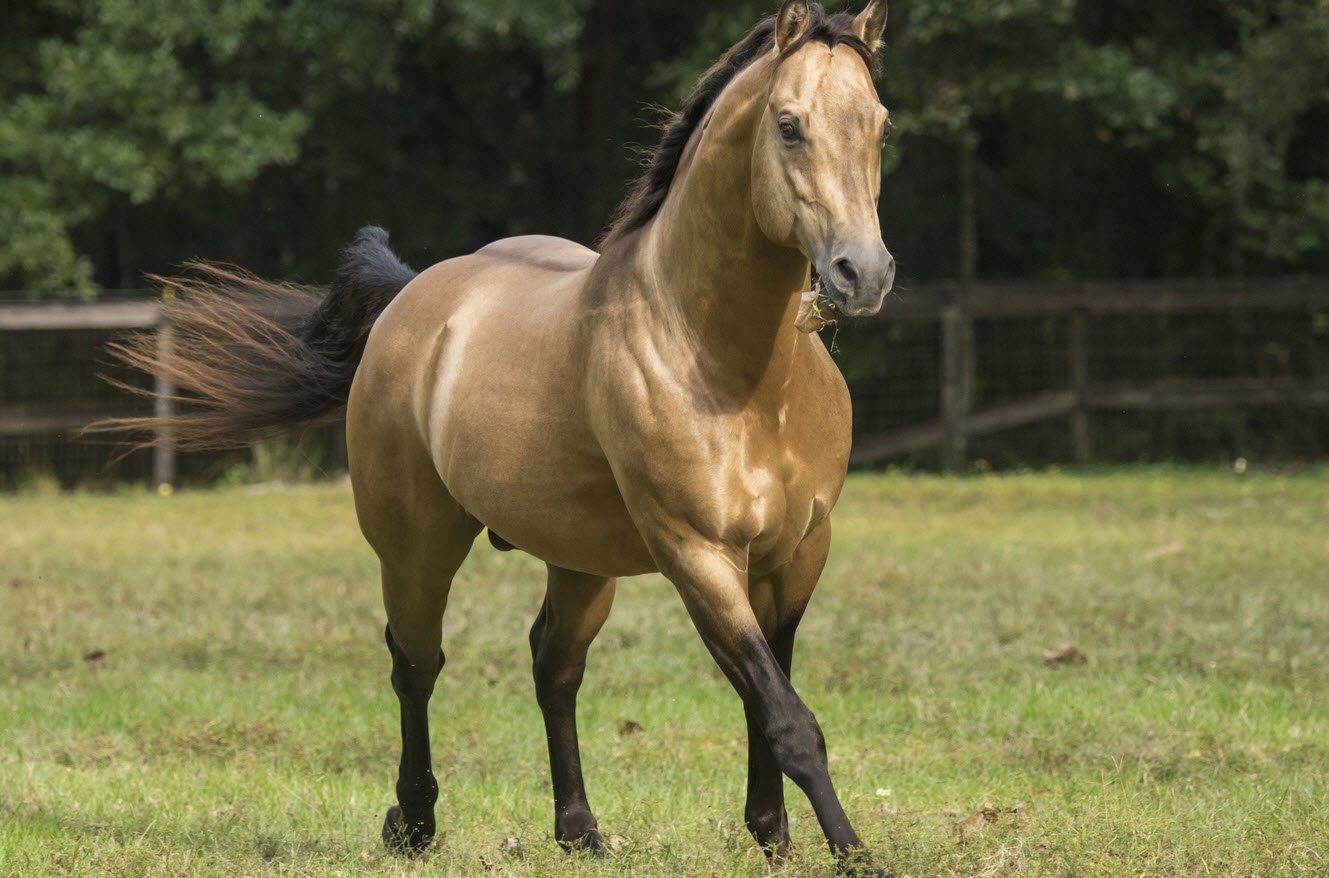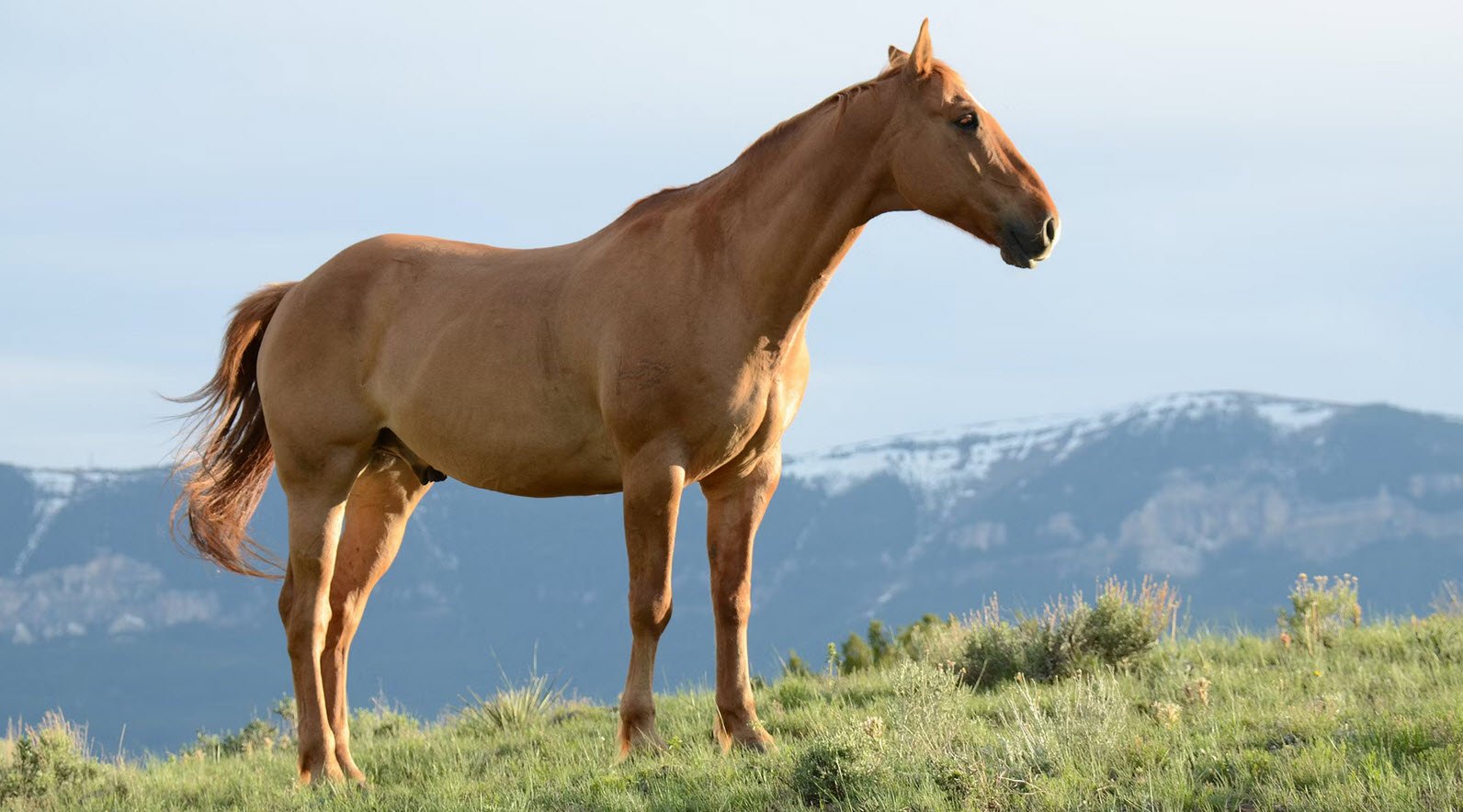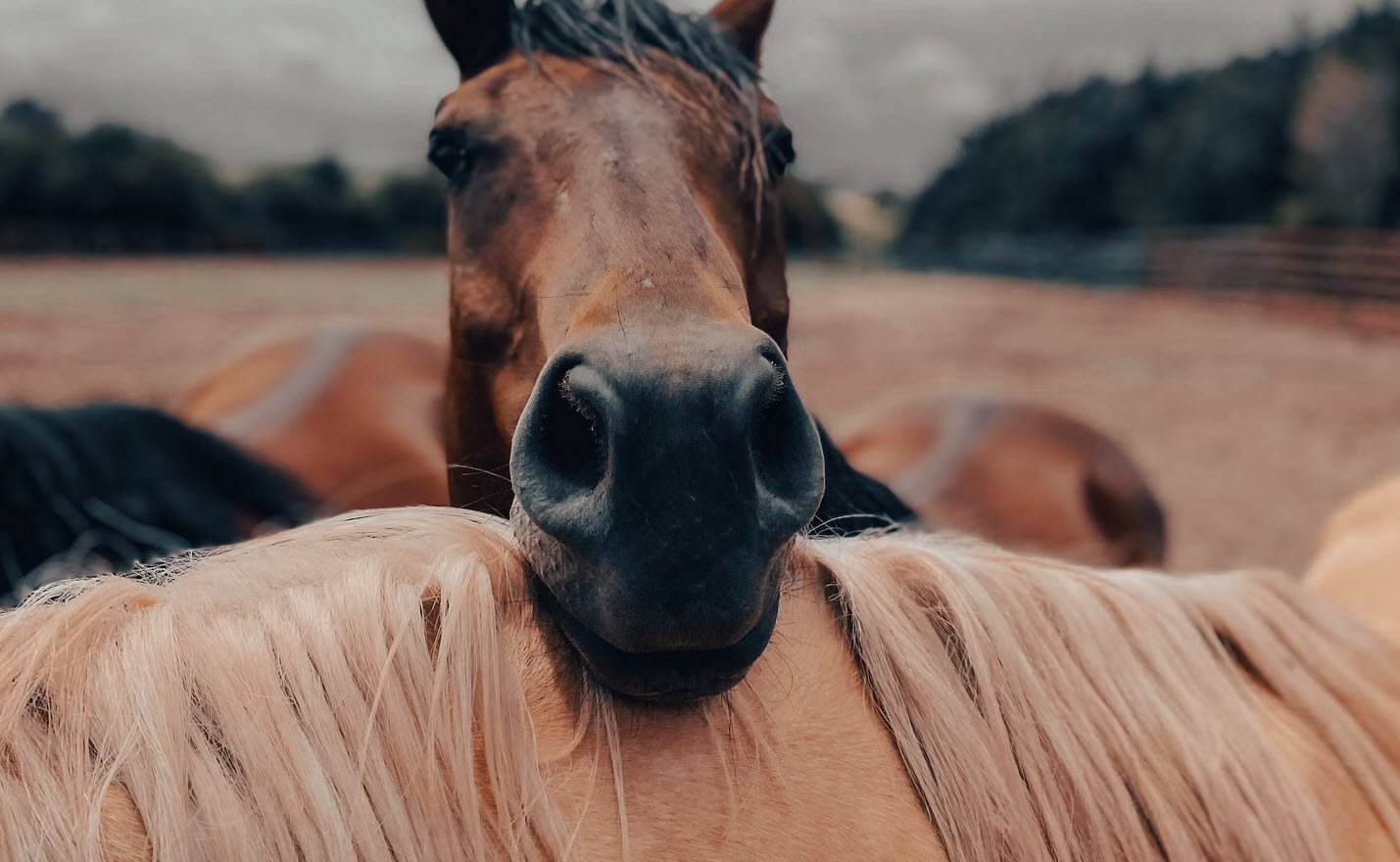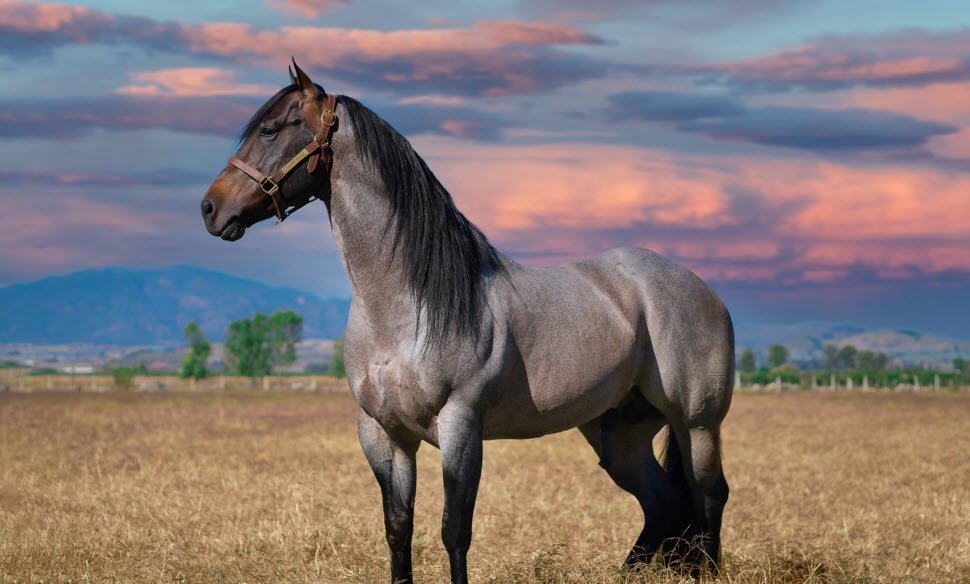
Horsemanship is the art of riding and handling a horse. Equitation is a refinement of riding techniques. The mark of a skilled rider is the ability to get desired results with the least effort and minimum resistance from the horse.
Horsemanship and good horse training are closely linked. The way a horse performs is a combined result of the skill of the rider and the quality of training the horse has received.
A beginning rider cannot do much even with a well-trained horse; a skilled rider does not expect much from a green horse. To overcome their fears, horses need slow, thoughtful training methods that take their natural instincts into account. We want to teach the horse to trust and not to refer back to its natural defense mechanisms.
To communicate and work effectively with horses, a person must stay calm and centered. This creates an atmosphere in which the horse can relax, trust, and learn.
Though horses are normally quiet and gentle, they can become excited and react violently if they are frightened or mistreated. If you follow simple safety rules, you can avoid undoing hours of careful training or a serious mishap. Carelessness is the leading cause of accidents and can cause serious injury to the handler, rider, horse, or others.
Knowledge of safe riding and handling is important to basic horsemanship. A gentle voice, slow easy movements, and a calm attitude reduce the horse’s fear and excitement.
Headgear and Boots
The most common riding-related injuries are to the head. Many of these could be prevented or made less severe by wearing protective headgear when riding or working around horses. 4-H rules require that members wear helmets any time they are riding or driving an equine, but it is recommended that you wear a helmet whenever you are working around horses.
When riding, wear boots with proper heels that prevent your feet from slipping through the stirrups. There should be a ½-inch clearance between the side of the stirrup and your boot.
Always wear hard-soled shoes when working around horses.
Handling
Always get to know the horse you are working with. Know its temperament and the way it reacts. Recognize the horse’s peculiarities. If someone else is handling your horse, tell them what to expect. Work on the horse from a position as near the shoulder as possible.
Also Read: The Complete Guide to Horse Care
Punish the horse only at the instant it misbehaves. Even a minute later the horse will not understand why it’s being punished. Never strike the horse on the head or between the ears. Avoid letting your horse kick or be kicked by keeping enough space between horses when tying, standing, or riding.
Catching or Approaching
Whenever possible, approach the horse at an angle and come in near its shoulder. Speak to it as you are walking up. Most horses are likely to jump or kick when startled and should never be approached from the rear. If it is necessary to approach from the rear, always speak to the horse before approaching or touching it. Speak to the horse first, then stroke it on the rump, and move calmly to the head. Stay close to the horse’s body to reduce the impact if it kicks.
Pet a horse by placing your hand on the horse’s shoulder and neck. Don’t reach directly for the horse’s nose. Their nose is in their blind spot, so this is annoying to the horse. When walking around horses, stay out of kicking range and do not walk under the tie rope. If you need to go behind the horse, stay close, putting your hand on its rump while speaking softly, moving closely around the horse’s tail.
When catching a horse in a large corral or pasture, move slowly, keeping the halter and rope out of sight. Watch out for other horses in the pasture that might be aggressive. Do not chase the horse, but patiently walk it down by following it. Do not use grain to catch a horse when other horses are present. Quietly slip the halter over the horse’s neck and head, being careful to keep your fingers out of rings, snaps, and loops. Be sure excess lead rope does not become entangled with your feet or hands.
Leading
Walk beside a horse when leading it, not ahead or behind, and always turn the horse away from you. A position even with the horse’s head or halfway between the horse’s head and its shoulder is considered the safest.
Never wrap a lead strap, halter shank, or reins around any part of your body. Use two hands to lead a horse. If the horse rears up, release the hand nearest to the halter so you can stay on the ground and not have your shoulder or hand injured. It is customary to lead the horse from its left (near side), using the right hand to hold the lead, near the halter.
The excess of the lead should be folded in a figure eight and held in the left hand. When leading, extend your right elbow slightly toward the horse so if the horse makes contact with you, its shoulder will hit your elbow first and move away from you. Be careful when leading a horse though a narrow opening, such as a door.
Be certain you have firm control and step through first. Step quickly and to one side to avoid being crowded. When dismounted and leading the horse, be sure the stirrup irons on an English saddle are run up, and be cautious of the stirrups on a Western saddle, which can catch on objects. If leading a harnessed horse, watch for dangling straps or reins that might become detached and tangled.
Use judgment when turning a horse loose, and make it stand quietly before taking the halter off. Turn the horse to face you and quietly remove the halter. Avoid letting the horse bolt away from you when released, by first dropping the noseband while keeping control with the halter or rope around the neck. Giving it a treat when released also teaches a horse to wait quietly. Stand back to reduce the chance of being kicked if the horse does take off.
Tying
Always think of safety. If the horse pulls back, can it break or move the object it is tied to, causing it more fright? Can the animal be released quickly in an emergency? Could it become tangled in brush, wire, boards, or other hazards?
Know and use the proper knots for tying a horse. There are two basic knots every horseman should know. Use the quick-release slip knot whenever you tie a horse with the lead rope. This knot allows you to release the horse quickly if it gets into trouble. Use the bowline knot when tying a rope around the horse’s neck. This loop will not tighten up, and the knot will not slip.
Never use a slip knot around the horse’s neck. Tie the horse with about 3 feet (or the horse’s neck length) of rope between the post and the halter. Tie no lower than the horse’s withers, and always untie the lead shank before taking the halter off a horse. This may prevent the horse from pulling back. Be sure to tie to an object that is strong and secure to avoid the danger of its breaking or coming loose if the horse pulls back. Tie to a post set in the ground and not to a rail on a fence.
Never tie a horse by the reins, as it may pull back, breaking the reins or injuring its mouth. Always use a sturdy halter and a ½‑inch or larger lead rope of cotton, nylon, or other sturdy material. The rope should be long enough to reach the horse’s rear.
It can be useful to teach a horse to crosstie (stand tied between two posts), but be careful the first time. Most horses don’t like having their heads held immobile, and many are frightened when they feel ropes pulling from the sides. Begin by having lots of slack in the ropes. Slowly shorten them until there is about 6 to 8 inches of overlap. You should always use quick-release snaps or slip knots when cross-tying, and clip the snaps to the siderings of the halter.
Never tie a horse with a chain on a lead shank. If the horse pulls back or rears, it could cause severe injury to the horse.
Riding
Wear your helmet at all times when riding. A horse should stand quietly and remain still until you are mounted and cue it to move off. Keep light control of the reins at all times. Never mount or dismount a horse in a barn or near fences, trees, or overhanging projections.
Until you know your horse, confine your riding to an enclosed area. Only after you are familiar with your horse and have good communication should you ride in open spaces or on a trail. Never ride your horse with just a halter and lead rope.
Ride at safe gaits. Never rush past riders who are proceeding at a slower pace. Approach them slowly, passing on the left if possible, and continue cautiously. Be careful about leaving other horses behind. Ask riders if it’s okay to go on without them.
When walking abreast or single file, you should leave at least one horse’s length between horses. You should be able to see the hind heels of the horse in front of or beside you. Leave extra space if you are behind a horse with a red ribbon tied in its tail, as that means the horse may kick.
To prevent a horse from becoming barn sour (wanting to rush home, often out of control), always walk your horse back to the stable or barn. Walk when going downhill or over rough ground, sand, mud, ice, or snow. Be aware of terrain and ride appropriately. Dogs and horses are not always good companions. Your dog may be a problem for other riders or horses, so be sure to ask others if it is okay to bring your dog along. If you do bring your dog, be sure you keep it under control at all times and obey any leash laws.
Suggested Read: Approaching, Handling, Leading and Tying the Horse
Riding at night can be a pleasure, but you must accept that it is more hazardous than daytime riding. Walk the horse; fast gaits can be dangerous. Be sure to wear light-colored clothing and carry a flashlight and reflectors.
Ride in places that are safe and familiar. If a rider is injured and appears in pain, lightheaded, or unconscious, do not move him or her. Unless the rider’s safety is in question, let a qualified person assess the injuries and determine if and how the person should be moved.
Riding on the Road
Try to avoid paved or other hard-surfaced roads, and always walk your horse when crossing roads. If you need to ride on a road, follow the rules to help make it a safe and enjoyable experience.
1. Remember to wear your helmet.
2. Be sure you know your horse well. Safety starts with a dependable horse. A nervous horse is far more difficult to handle away from familiar surroundings. Train your horse at home to confront new and strange objects quietly. If your horse becomes frightened, remain calm, speak
to it quietly, steady it, and give it time to overcome its fear.
3. Never ride alone. Ride in single file, staying at least a full horse’s length behind the horse in front. Place quiet horses in the front and at the rear of the ride.
4. Ride defensively. A person riding a horse on the road has to follow the same rules as the driver of a motor vehicle. Know the rules and regulations from your state’s driver’s manuals. Ride with the traffic, on the right-hand side of the road.
Use the correct hand signals for turning or stopping. If your horse becomes frightened while a car is approaching, raise your hand palm up as if you were signaling a stop (the driver should slow down). Do not make unusual or unexpected moves. Be alert, courteous, and aware of others. Acknowledge drivers who slow down while passing you. Wear bright, colorful clothing that any motorist can see.
You may also like:- 14 Important Body Language Cues in Horses
- 4 Best Horse Breeds for Beginners
- What Horses Cannot Eat and Should Extra Avoid: A Guide to Equine Nutrition
- 10 Essential Tips to Ensure Your Horse’s Health During Summer
- Understanding the Average Weights of Common Horse Breeds
- A Nutritious Diet for Horses (Vegetables and Fruits)
- 14 Most Fascinating Horse Breeds From Different Regions
- The Complete Guide to Horse Care
- Approaching, Handling, Leading and Tying the Horse








